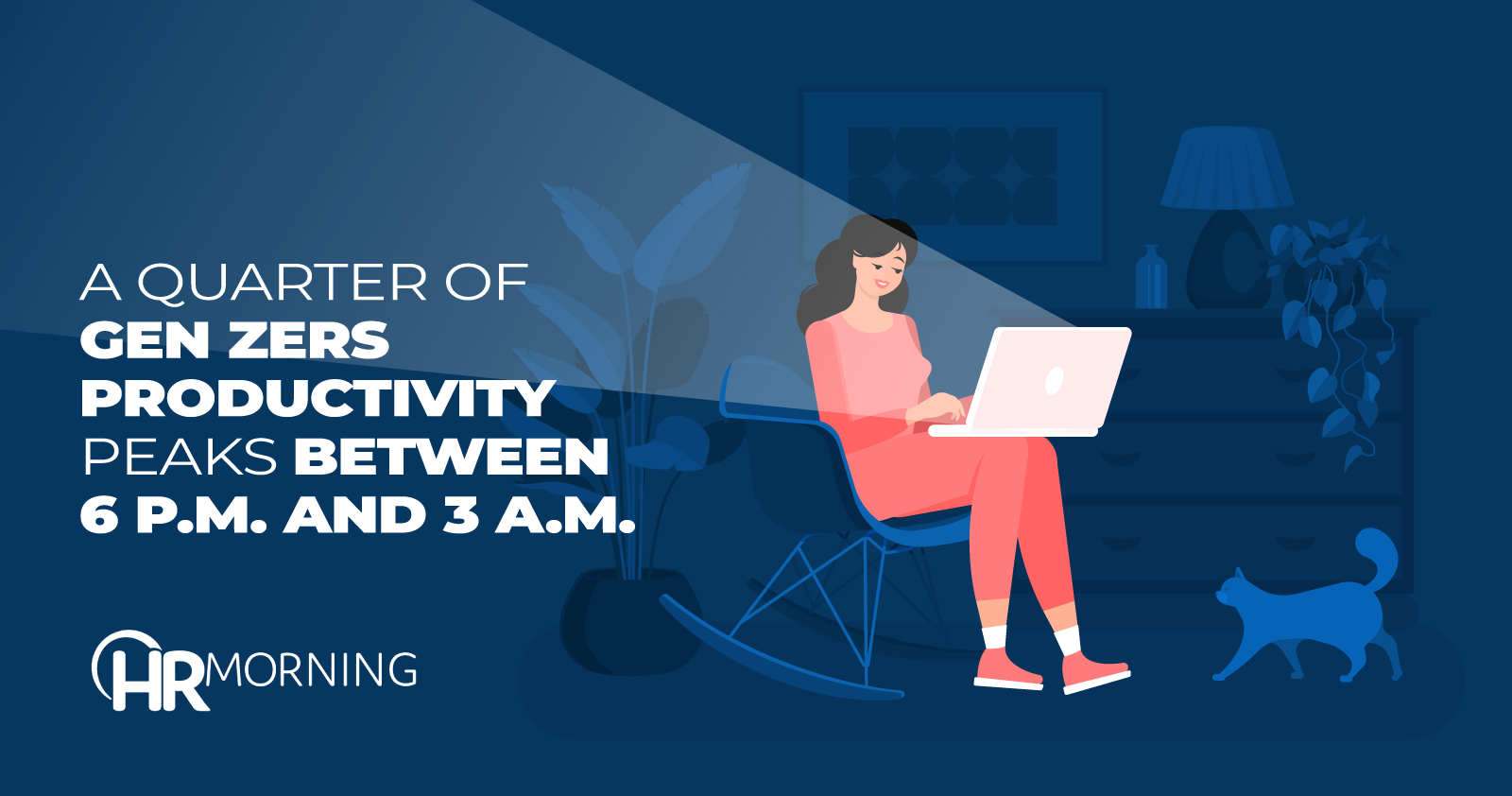For Gen Z, the traditional 9-5 is out. They want to work when, where and how they want. And for many, that means working outside of traditional office hours and later at night when they’re at peak productivity.
Flexibilities within work hinge around one central concept: Workers want to do work when it’s best for them – when their productivity is highest, their distractions are reduced and they can do their best work.
That could mean letting Gen Z take the night shift, as a new study from Adobe found that over a quarter of Gen Z workers (26%) reported their peak productivity time falls between 6 p.m. and 3 a.m., compared to 18% of millennials and 13% of Gen X.
Productivity times vary across generations
In addition to Gen Z’s preference for late-night work, this generation is also ready to find new opportunities if they’re unhappy. In fact, the report found that 70% of young workers would consider leaving their current jobs for positions offering more control over their schedules.
Even though Gen Z can be more vocal about their desire for flexibility, over half of all respondents (51%) reported that working flexible hours when it’s most convenient for them would be their ideal work schedule, compared to 16% who would rather start and end work according to a set schedule.
Plus, younger generations not only feel pressured to be reachable at all times of the day, the study found, but also felt pressured to be online during typical office hours, even if they know they won’t be productive.
Peak productivity times varied greatly between generations, with the study finding that:
- More boomers reported peak productivity in the early morning, between 3 a.m. and 9 a.m., compared to other generations
- Among all the generations surveyed, Gen Z was the least likely to report peak productivity during office hours, between 9 a.m. and 5 p.m., and
- Only 6% of boomers reported peak productivity during late hours, between 6 p.m. and 3 a.m.
How HR can accommodate different work schedules
Not accommodating to how the younger generation prefers to work can cost you, as this generation isn’t afraid to leave if they’re dissatisfied. In fact, Adobe’s report found that over half of Gen Z workers (56%) plan to switch jobs within the next year.
Here’s how to help accommodate generational differences in productivity to keep your best talent satisfied and help them do their best work.
Set guidelines to minimize conflict. Allowing employees to work when they want can have many benefits, but it can also easily lead to miscommunication or frustration. Establishing standards and guidelines can help keep employees on the same page with co-workers and managers, such as any core hours that all employees are required to be online or a policy on contacting co-workers outside of office hours.
Embrace asynchronicity – when it fits. Asynchronous work gives workers the opportunity to work at their peak productivity levels, but it’s important to understand which projects and tasks will produce the best outcome when done on an employee’s own time, and when a project needs the support of a synchronous, team effort.
Keep a pulse check on your people. When implementing any benefit or change, surveying employees and getting feedback is a critical part of the process. No matter what type of work schedule policy you have, routinely surveying employees to understand how they like – or don’t like – the changes can help you adapt to satisfy employees.
Find alternative areas to offer flexibility. If night owls – or any other worker preference – just can’t fit into your business model, consider offering flexibility in other areas to help workers. For example, if you can’t change when employees work, consider allowing flexibility in where or how they work.


